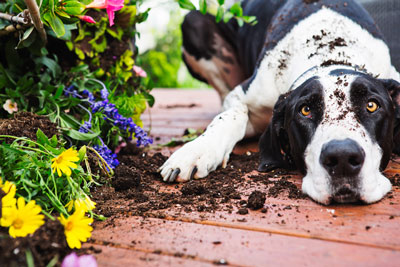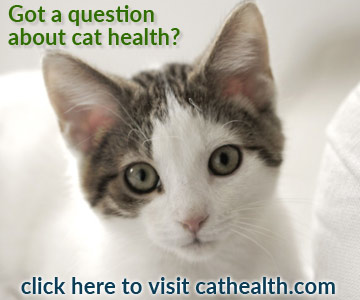Garden Threats for Dogs

When you have dogs, you're used to looking at things from their perspective, dog-proofing your home as much as you can.
This spring, be sure you to expand your dog safety thoughts outside and eliminate or mitigate dangers there as much as possible. Here are some of the things to be aware of as you're getting your garden going this year.
Spring Bulbs Can Be Dangerous to Dogs
If your dog gets ahold of and eats spring flower bulbs, vomiting and diarrhea will be the likely result. Bulbs can even cause gastrointestinal obstruction in smaller dogs or if big dogs eat several at once. Obstruction requires surgery to relieve.
Sago Palms Are Toxic to Dogs
Sago palms are popular ornamental plants in many areas of the United States. Unfortunately, they are toxic to dogs (and cats and horses). Ingesting tiny amounts can cause serious problems in dogs including vomiting, liver failure, seizures, coma, and death. You can learn more here: "Sago Palms Are Extremely Toxic to Dogs."
Oleander, Lily of the Valley, Milkweed, and Foxglove Are Dangerous to Dogs
These plants contain components that negatively affect a dog's heart. Ingesting them can lead to cardiac arrhythmias, heart failure, and death.
Blue-Green Algae Is Highly Toxic to Dogs
The blue-green algae that grows in some ponds and lakes may produce toxins that can cause liver failure and neurotoxicity in dogs that are exposed to them. Keep your dog out of waterways that have algae in them, and rinse him off thoroughly if he is exposed, then watch him carefully for any signs of illness.
Slug and Snail Bait Is a Common Toxicity for Dogs
Dogs seem to be drawn to eating slug and snail bait, and it's toxic to dogs. Most of these products are made of metaldehyde, which causes severe muscle twitching that leads to an ever-increasing body temperature that eventually can cause death. Learn more here: "Slug and Snail Bait Poisoning in Dogs."
Many Pesticides and Insecticides Are Dangerous to Dogs
Be sure to carefully read the labels of all pesticides and insecticides you use in your garden and around your home. If it doesn't specifically tell you how long to keep your dog away from the area after application, call the company and ask. Keep the containers safely out of reach of your dog.
<You May Also Like These Articles:
Slug and Snail Bait Poisoning in Dogs
Springtime Hazards for Dogs - Slideshow
Black Widow Spider Bites in Dogs
Foxtails: A Summertime Hazard for Dogs
Disclaimer: This website is not intended to replace professional consultation, diagnosis, or treatment by a licensed veterinarian. If you require any veterinary related advice, contact your veterinarian promptly. Information at DogHealth.com is exclusively of a general reference nature. Do not disregard veterinary advice or delay treatment as a result of accessing information at this site. Just Answer is an external service not affiliated with DogHealth.com.
Notice: Ask-a-Vet is an affiliated service for those who wish to speak with a veterinary professional about their pet's specific condition. Initially, a bot will ask questions to determine the general nature of your concern. Then, you will be transferred to a human. There is a charge for the service if you choose to connect to a veterinarian. Ask-a-Vet is not manned by the staff or owners of DogHealth.com, and the advice given should not delay or replace a visit to your veterinarian.



